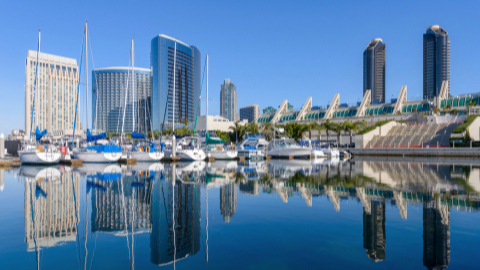
The Port of San Diego Board of Port Commissioners recently approved the installation of a microgrid, battery storage system, and electrical infrastructure at the port’s Tenth Avenue Marine Terminal (TAMT) – one of the Port’s two marine cargo terminals. The project is expected to advance the use of renewable energy and reduce greenhouse gas emissions throughout the terminal.
Solar photovoltaic panels will power the microgrid which will provide back-up power to port-operated facilities, such as security infrastructure, lights, offices, and the existing jet fuel storage system. It will enable the operation of critical terminal infrastructure for approximately 4 hours in the case of an electrical outage.
An energy savings report commissioned by the port authority projects that the microgrid will result in $3.2 million US in energy savings to the port over 20 years – exceeding the project’s $2.77 million construction cost. EDF Renewables Distributed Solutions, Inc. (EDF) has been awarded the construction contract, as it was the highest-ranked proposer among five bidders.
The total cost of the microgrid project is anticipated to be approximately $9.6 million – $4.9 million of which was funded by a California Energy Commission Electric Program Investment Change (EPIC) grant. The port is contributing $4.2 million, and the University of California San Diego – which is partnering with the port on the project – is contributing $201,000.
“This is a groundbreaking milestone for the Port and we are extremely proud to be on the forefront of collecting sustainable power and demonstrating energy resilience,” said Vice Chair Michael Zucchet, Port of San Diego Board of Port Commissioners. “We will soon be one of a few ports worldwide that will have a microgrid powered by renewable energy at a cargo terminal. We look forward to demonstrating a replicable model that can be used by other ports in California and around the world.”